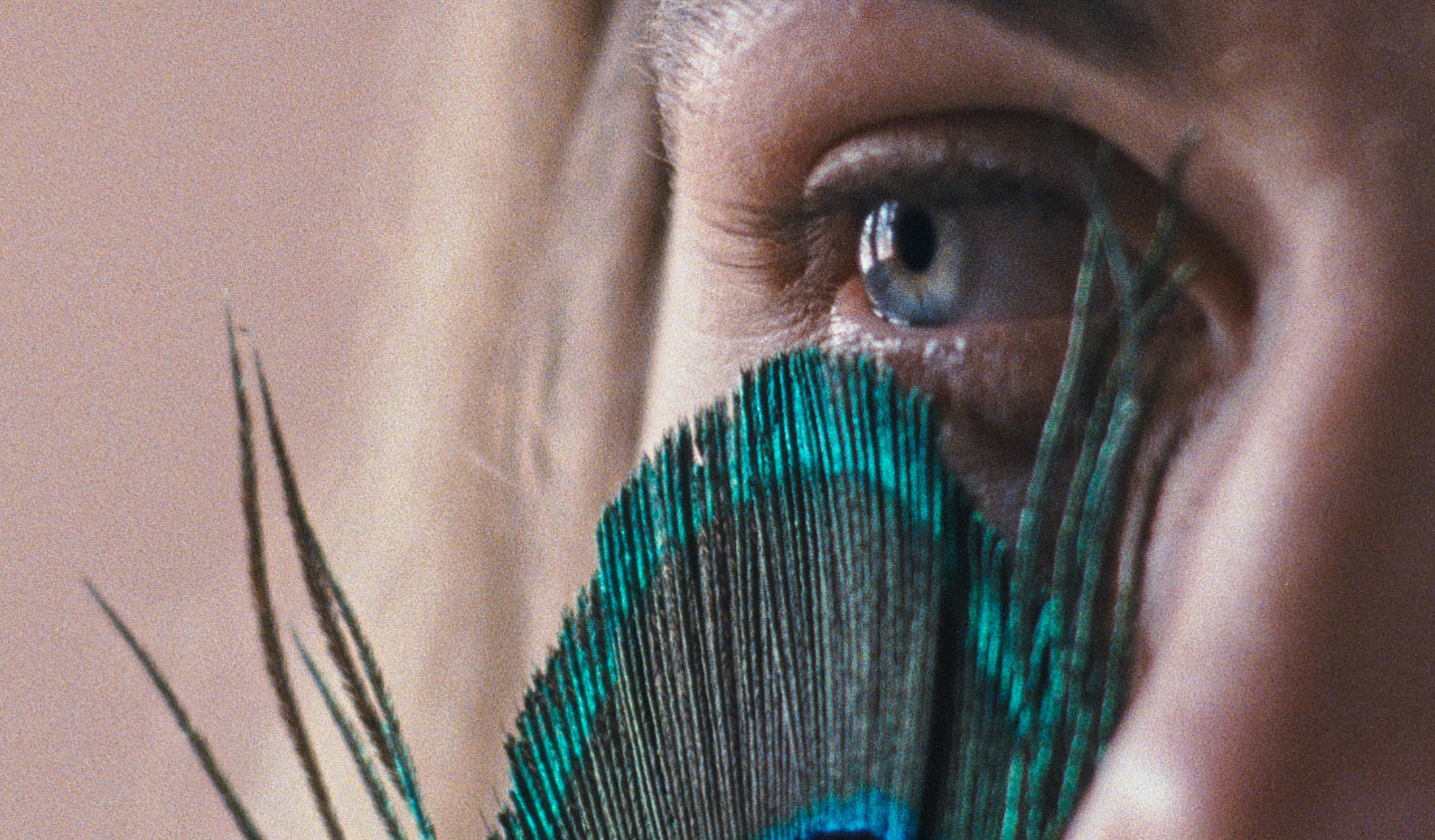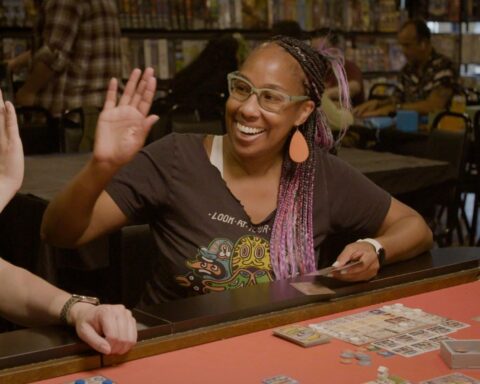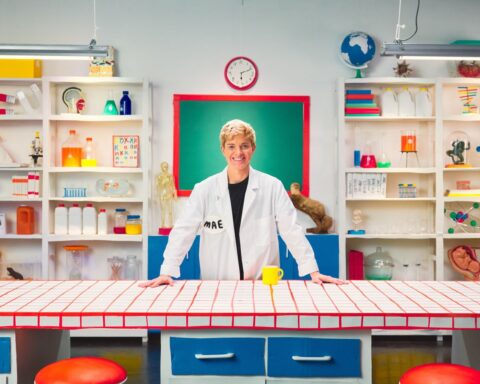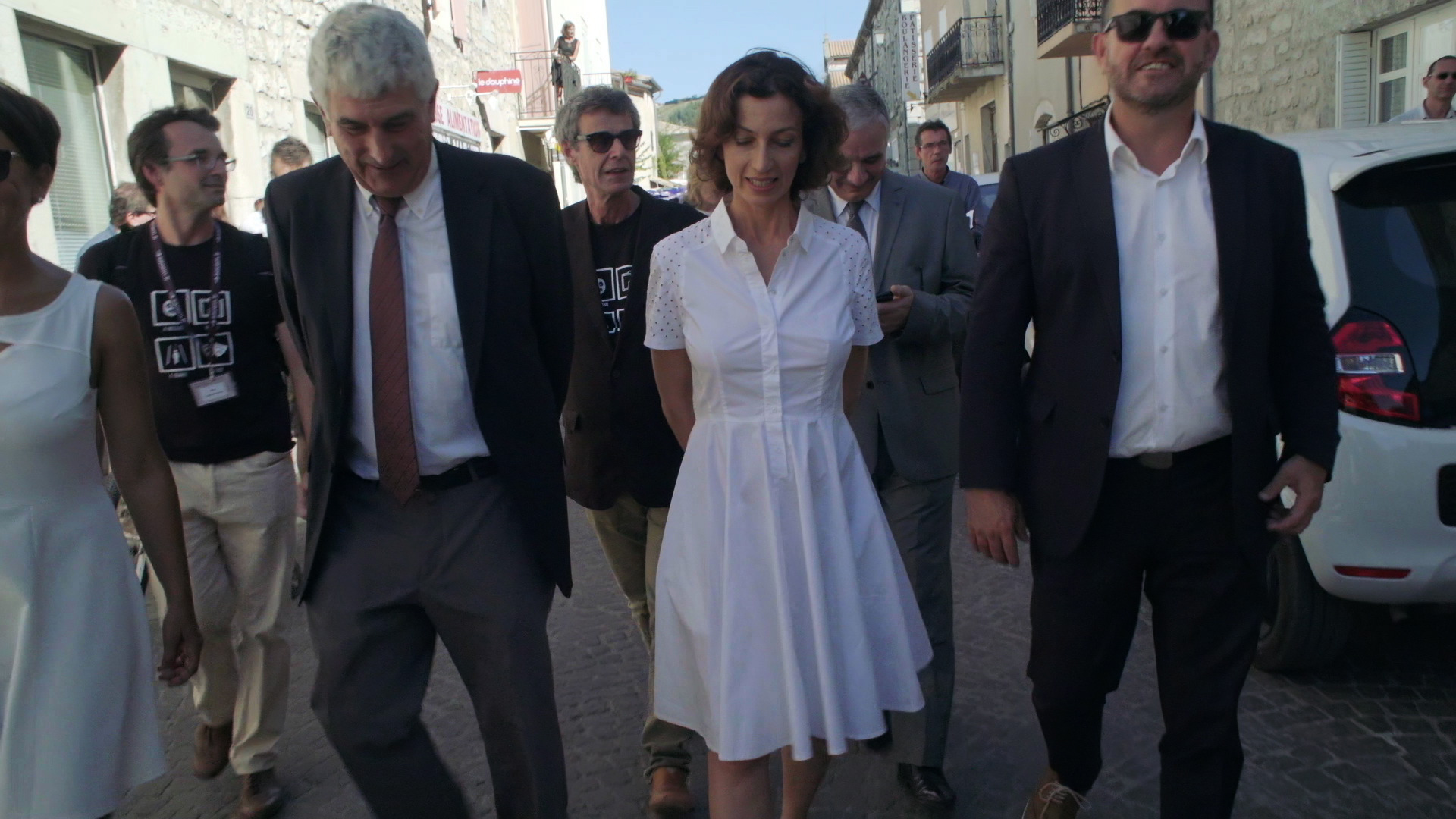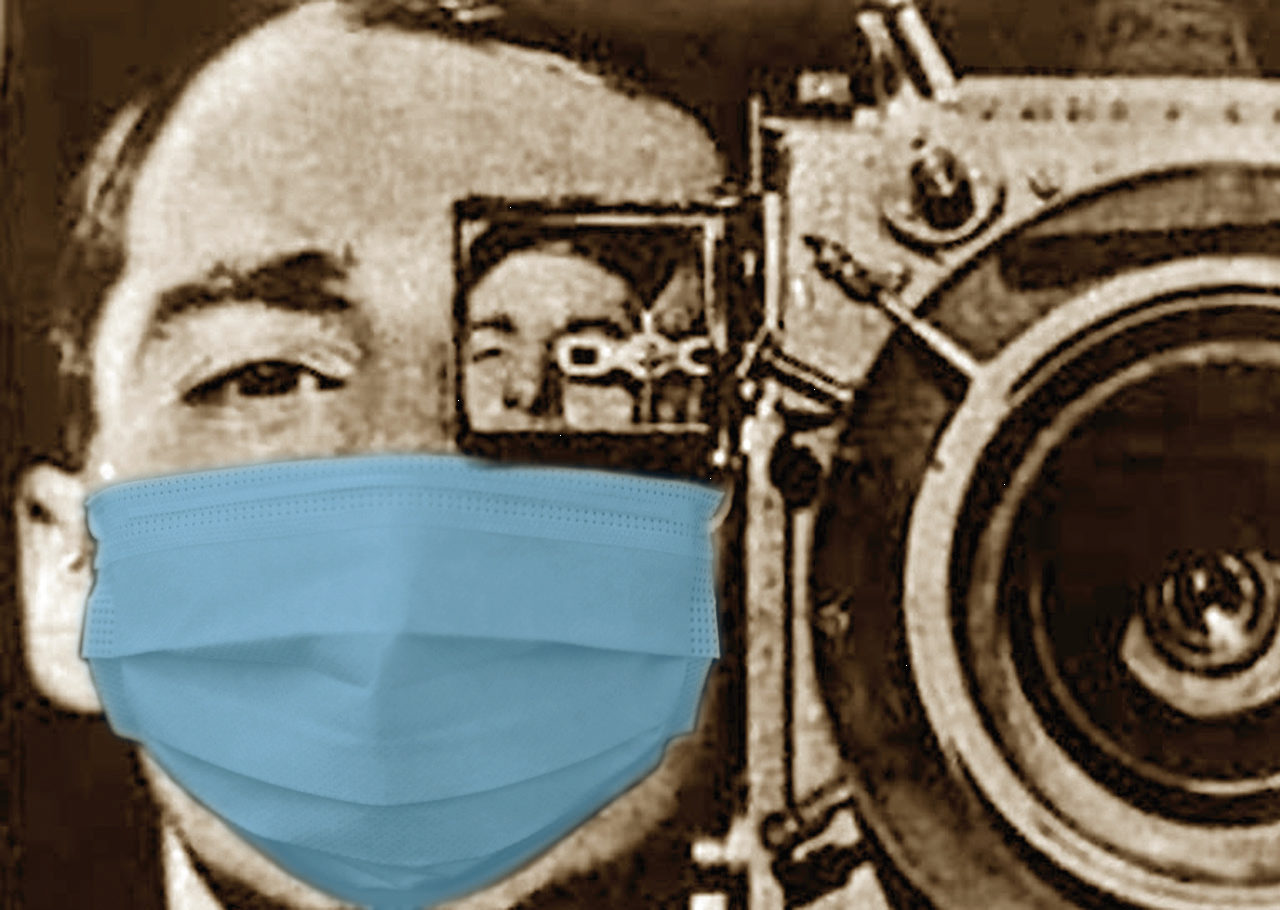With her film The Metamorphosis of Birds, director Catarina Vasconcelos recreates a life unknown. Vasconcelos’s grandmother, Beatriz, died two years before she was born, but she left behind many memories; objects, letters and even a voice recording. The film is divided into two distinct halves as it explores the story of Beatriz’s life and the absence she left behind. Heavily informed by the world of painting and the natural world’s secrets, Vasconcelos’s film is epistolary, drawn together from fictional writings and letters, imagining lives lived and lost.
A poetic work of creative nonfiction, The Metamorphosis of Birds unveils through personal loss a story about Portugal. The film’s ordinary domesticity opens up to reveal stories and experiences about a nation in search of itself. It is a film about intergeneration trauma and the search for meaning amidst enormous personal and political change.
In her first feature film, Vasconcelos joins a great legacy of self-reflexive Portuguese filmmakers, such as Miguel Gomes and Rita Azevedo Gomes, in her use of nonfiction and artifice to explore identity and personhood. Rigorously constructed and yet painfully intimate, The Metamorphosis of Birds is a vital portrait of love and connection.
Catarina Vasconcelos spoke with POV Magazine by phone ahead of the premiere at RIDM.
CV: Catarina Vasconcelos
POV: Justine Smith
This interview has been edited for brevity and clarity.
POV: Could you explain how the film came to be?
CV: I lived in London for almost four years. While I was there, I had this trivial conversation with my father over Skype. He was telling me about Lisbon and in the middle of it, he said, “by the way, your grandfather wants to burn the letters between him and your grandmother before he dies.” I was shocked. We had an argument because I wanted to read those letters. I didn’t meet my grandmother; she died two years before I was born. I truly believed that somehow I would meet her through the letters or, at least, know more about her. We had a discussion, and he said, although they are your grandparents, they are also people and you can’t just read their intimate letters. We finished this conversation, and I was very tempted to make a film about my grandmother.
When I came to Lisbon during Christmas, my father felt that I was sad about the letters. He told me there’s a vinyl that his mother made when he was very young. [He explained], “She took us to the post office, just to make a record.” The vinyl was made in 1957. It was dirty and not in good condition. I had to take it back to London to repair it. When I heard it for the first time, it was like a ghost speaking. Having Beatriz speak to me was how the film started and her voice appears at the end of the film.
POV: Have you always had this desire to connect with that part of your family that you never met?
CV: My mother got sick when I was 11, and she died when I was 17. All of my time as a teen was with my mother dying. When someone dies, especially when you are younger, it becomes a part of who you are. By doing these films, I’m trying to rescue a part [of my life] that I didn’t live with my mother and with Beatriz. Funnily enough, when I started to make The Metamorphosis of Birds, I thought I was just trying to rescue my grandmother and her memory. It took me a long time to understand how this story was connected with my own story. It’s weird because everyone is like, of course, it’s the same story, but it took me a long time to see how they are connected. How losing the mother was something that connects me with my father. When someone as important as a mother dies, a part of you dies as well. Maybe it’s a way of rescuing or saving that part of myself.
POV: The film is divided into two halves. The first half is more representational, and the second half is definitely a bit more abstract. Can you discuss the relationship between the way those two halves operate together?
CV: I really wanted to make a film about Beatriz, and I started to have all of these conversations with my father and my uncles and aunts to know more about her. They were incredible and generous, but there were lots of things that I felt that they didn’t tell me. I was like, “why are they hiding [things] from me? What’s the big secret?” Then I understood that there is not a big secret; it’s just how families operate. Some things are [not said] in families.
They would say a lot about themselves and how they grew up. I understood [that] to make the film about Beatriz, I needed to talk about the family and how they grew up. To speak about [her] absence, I would need to build the idea of presence: How this woman was present in gestures and objects; [then] you could actually have in the second part this idea of absence.
I don’t believe in God, as my grandmother did. She had this huge faith in God. She was a very Catholic person. I’ve always felt solace and consolation with nature. That connected me, my grandmother and even my mother, this love of nature and for things bigger than us. The second part is more abstract because our relationship with them is quite abstract. You can’t touch them. You’re searching for something that is not here anymore. Nature gives us a very expressive way [of connecting]. Through seasons, autumn and winter [and then changing to] springtime: things that die always return in another way.
POV: Can you explain how you went about constructing the soundtrack for the film?
CV: I studied music when I was younger. I played the violin and felt very comfortable in an orchestra, and there’s this feeling when you are playing in an orchestra that the world makes sense. When I was thinking about the film and all these voices, it was like a choir. I always wanted the narrator, my father, to be the contrabass, and then Beatriz would be the soprano. Then you’d have the choir of children. The first [layer] of the score is all the voices that come together, a bit like the Virginia Woolf novel, The Waves, where you have all these different characters coming and going.
I worked with Miguel Martins, who did the sound design. One day, he was working by himself, and he called me because he found the key to the film. He showed me the sequence of the boat at night when all of the letters of these different women are being read. There was this beautiful sound in the background. I asked him, “what’s that sound?” “That’s the key,” he said. I asked him to take out all of the other sounds, just to hear it. It wasn’t a sound from this earth; it was a sound from the universe. And he said, “it is the sound of the moon.” I asked him where he found the moon in the film? He told me it was when the kid made the moon drawing to send to his father. I was moved because Miguel was searching between the images and between what was said to build this sound score.
POV: There is a strong presence of paintings and frames in the film. Can you talk about that aspect of the film’s aesthetic?
CV: I don’t come from a cinema background; I come from a fine arts background. I’m a lousy painter and I’m awful at drawing [but] I studied at the fine arts academy, and in the end, I decided to go for graphic design. I was always very seduced by painting lessons and watching all of my friends paint.
When we started to shoot in my grandparents’ house, I met the director of photography Paulo Menezes. I told him that I would like to film a bit like a still life, like a “nature morte,” and Paul’s eyes opened wide. He studied painting [as well]. While working with Paulo, I almost felt like we worked in an artist’s studio, trying to find the best light. Flemish painting and still lifes were important in the first half of the film.
POV: Could you name any specific artists that were used to serve as inspiration?
CV: I’m quite interested in the first artists, [as in] the first ones to sign their names on their paintings, like Giotto di Bondone. You feel the invention of painting; like when perspective first appears, and it’s something magnificent and very moving. There’s another painter from Holland, Petrus Christus, [his work has] this very sharp light, but it’s also quite banal. Then, of course, we have Joaquín Sorolla [whose painting “Mother” appears] at the beginning of the film. The whites of Sorolla are filled with all these colours; it’s all about portraying the light. Then, of course, there’s a painting by Peter Bruegel [in the film], a big inspiration specifically for the colour palette he brought to the world of arts and this film. There’s also Josefa de Óbidos, a Portuguese painter during the Renaissance. It’s quite impressive that we still have her works, and she was allowed to be a painter. Many of the still lifes in the film were based on her paintings.
POV: This is a film about your family, but it also speaks to the broader world, especially Portugal. Could you explain how this story relates to the world at large?
CV: This is quite a banal story; it’s about the death of a mother. Unfortunately, it’s something that many of us have gone through, and many others will go through. The uniqueness comes from how a person sees [the story]. I couldn’t just speak about my family without giving it context, which was Portugal during the dictatorship. The dictatorship in Portugal lasted 48 years, the longest dictatorship in Europe in the 20th century.
My grandfather was born in 1926, which was [around] when the dictatorship started. My father was born in the 1950s, but by the time he turned eighteen, he understood that life in the rest of Europe was very different than in Portugal. He was stuck in this grey, dark country. At the same time as this traditional and conservative dictatorship, Portugal was starting all these wars in African countries. That’s what triggered the revolution in Portugal, the Portuguese colonies’ wars as we used to call them. Although this happened quite a few years ago, we are only addressing the issue of colonization in Portugal very recently. I still learned that the Portuguese people were amazing because we discovered the world and had these colonies. I’m not that old, so that tells you that some of the reflections that happen in the film are reflections from today, from our point-of-view.
My father and uncles would tell me about the generational gap between them and their parents. The children wanted something change, and the parents knew the children were right, but they couldn’t even imagine another world because they always lived under a dictatorship. This was a critical point in many Portuguese families—they didn’t want a dictatorship, but they didn’t even know how to think differently because they lived under one for so long.
The Metamorphosis of Birds screens at RIDM Nov. 26 to Dec. 2.
Visit the POV RIDM Hub for more coverage from this year’s festival.




